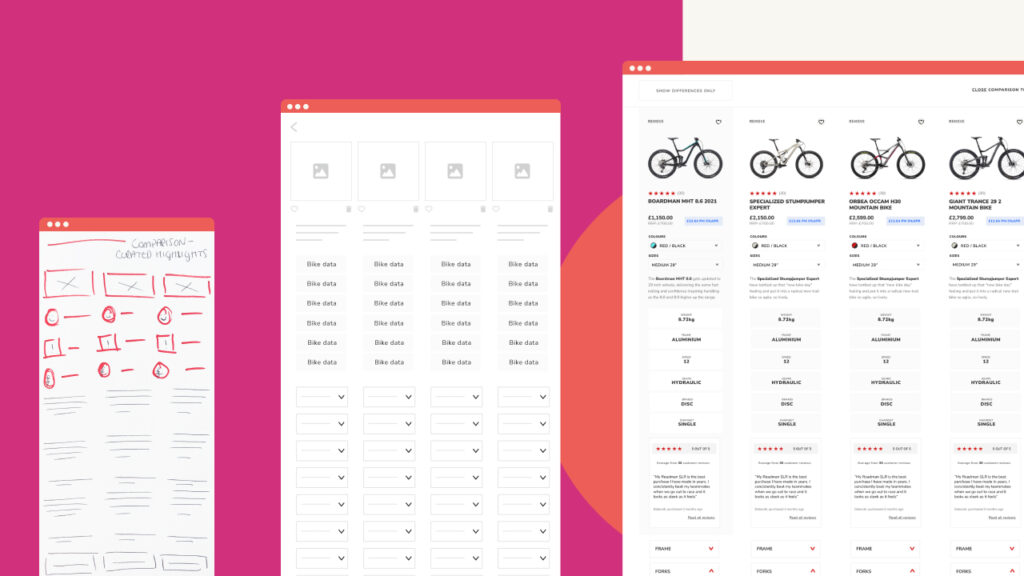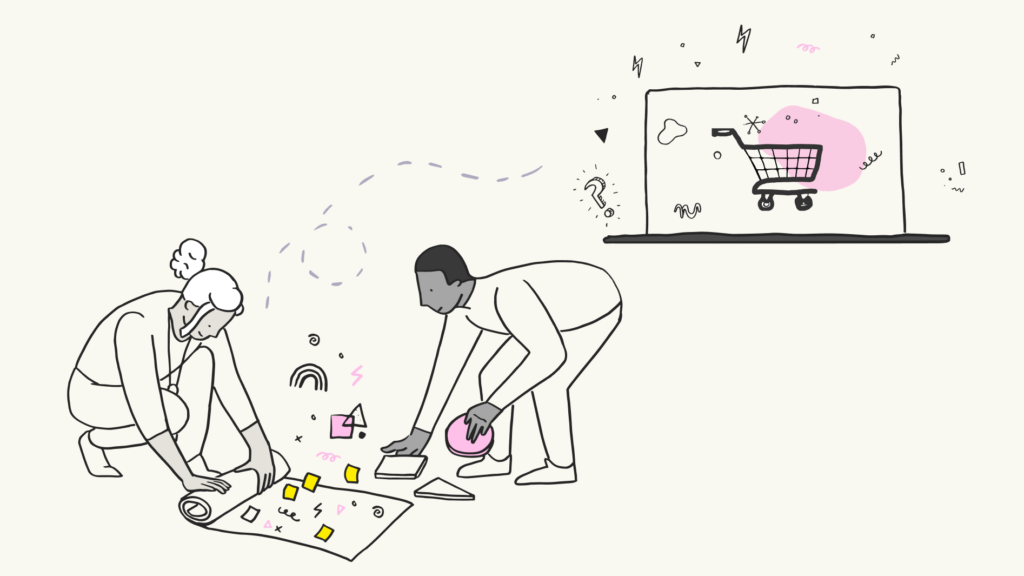
Another quiet night in, another night binging my favourite series on Netflix. My phone pings, it’s from Amazon. It says my Amazon subscription is renewing soon and disaster – it’s increased to £100 annually.
I just renewed my Disney Plus for £80 and my Netflix runs at £9.99 a month. I can’t justify this. It has to go.
I know it’s going to require a lot of concentration and effort to cancel it. I pause “Star Trek: The Next Generation” and focus. Enter the confusing dance that is Amazon’s interface design.
Like playing against a chess master, it’s always one step ahead. Wherever I click, thinking I’ll find the golden snitch of “cancel your subscription”. Instead, I’m met by needless guff and “Benefits of Prime Membership”. But no option to cancel.
After 10 minutes, I give up. Amazon has defeated me for tonight. “I will return”, I vow to myself, and return to the final frontier.
The next day as I was walking into the office, I noticed that Bristol city council had painted a Bus gate on one of the bridges into Queens square. I look around, there’s no warning to drivers of this otherwise innocuous sign painted onto the road.
I stand and watch for a few minutes. At least 30 cars fly over it, not realising the pain and frustration they’ve brought on themselves. And the fine that would soon be arriving for them in the post.
What Amazon and Bristol council have done here is utilise deceptive patterns. Previously known as Dark UX, these patterns are used to enhance short-term profits at the expense of brand reputation and customer experience.
But what are deceptive patterns?

In a sentence, they’re a series of techniques used to override our informed decision-making process. They take advantage of human behaviour and trick us into doing something we would’t usually.
They’re often used to convince us to buy that in-game add-on or take a shortcut (even when it’s illegal). Or even in my case, not cancel an Amazon prime subscription because it’s just too much effort.
Why shouldn’t you call it dark UX?
I understand that deceptive patterns may not the most well-known term. I only learnt about it last month. However, it’s important that we move away from ‘Dark UX’.
Firstly because, internally in Nomensa’s UX team and externally in the wider industry, there’s been debates around the potential racial implications of the term. The word ‘Dark’ is being used to mean ‘bad’. An article by Intuit explains this issue in more detail.
Secondly, it’s not a descriptive term. What exactly does ‘Dark UX’ mean to someone who doesn’t work in the tech industry? Without someone there to explain it to them, it may as well be called the ‘bad design’ – and even that’s more descriptive.
Who uses deceptive patterns?
As the first paragraph suggests, a number of organisations do. Everyone from Facebook (I refuse to call them Meta) and Epic Games to various local councils. Even Pizza Hut!
A recent study conducted by the European commission, reviewing 399 e-commerce sites annually found that “Nearly 40% of the online shopping websites rely on manipulative practices to exploit consumers’ vulnerabilities or trick them.” – Didier Reynders, European Commissioner for Justice.
No wonder there’s money saving applications purely created to manage people’s subscriptions. If everyone on the market uses these patterns, are we ever “choosing” to buy anything?
Maybe that’s a too existential a question to be asking here.
What types of deceptive patterns are there?

As you can imagine, companies have had years to perfect the art of misdirection. This blog will detail a few everyday examples, but you can see a more definitive list here.
Roach Motel
When it’s extremely easy to get into a situation (for example, sign up to a subscription), but then it’s very difficult to get out of it. Think of being the fly in a Venus fly trap, but in this instance it’s your wallet that doesn’t escape.
Price comparison prevention
Where the retailer makes it difficult or impossible to compare the price of an item or service with competitors. For example, certain companies that won’t allow themselves to be advertised on price comparison sites. Some even boast that you can only find the best deal if you work with them directly.
Confirm Shaming
Guilting users into opting into something. Often wording the option to decline in a manner which would shame them into compliance. Commonly seen on clothing sites where they try to endlessly harvest your email with a “Save 15% off”. If you decline, the option states “No, I’m not into savings”.
Forced continuity
When users’ credit cards are silently charged after a free trial comes to an end without any warning. As you can imagine, this is commonly used with the ‘Roach Motel’ technique. (I write this one through gritted teeth, remembering the number of free trials I signed up to and immediately forgot about. My bank account has never recovered.)
Why should we care?
So now we know what deceptive patterns are, I hear you ask: why should we care? Do companies not need to turn a profit? If people still click that button or subscribe to a service, why does it matter?
Well, I won’t give you just 1 reason. I’ll give you 4.
You may be breaking the law
Throughout the EU and US, laws are being created (at a snail’s pace) to combat these issues. In 2022, Facebook and Google were fined €210 Million for making it difficult for users to decline tracking cookies.
In a more recent example, Epic Games was fined $520 Million for using deceptive patterns to influence children into buying more in-game products. While governments are focusing on larger organisations right now, those laws apply to everyone. So it’s just a matter time until they’re enforced more broadly.
It harms customer relationships
I’m not sure I can explain this better than the following quote:
“Any short-term gains a company gets from a dark (deceptive) pattern are lost in the long term.” – Hoa Loranger, NN Group.
We’ve seen examples where companies rely on deceptive patterns to thrive, but after a while it impacts customers’ levels of:
- trust
- happiness
- loyalty
It’s understandable. I mean, who wants to buy from a brand they feel patronised by? That tricked them into a bad deal? Or that don’t offer good value for money?
It’s unethical
If you’ve read this far and you still think “Maybe there’s a redeeming quality about deceptive patterns?” think again. I like to think that I’m fairly experienced in the technical world. I work as UX consultant building digital experiences – but I’ve still fallen victim to these patterns more than once.
And if I can fall victim, knowing what I do about UX and human behaviour, how will this impact the more vulnerable in society? Should they really be taken advantage of over and over again so an organisation can hit that 5% growth they so desperately want?
It will impact your bottomline
Over time, deceptive patterns contribute to a culture of mistrust and cynicism. They erode trust in technology, services and brands, even when those services were created to help people.
Additionally, deceptive patterns lead to harmful, long-term implications for your bottom line. And once your customers don’t trust you, you’ll have a hard time winning them back over. In fact, 51% of customers will never do business with a company again after one negative experience.
So, what can companies do?
Understanding that there is a problem is always the first step. As consumers, they’re frustrating. But as the people who work on designing these services – we can do something about it. It’s time to take the fight to deceptive patterns.
From my research, I’ve created 4 principles which can be used to help facilitate a conversation about change in organisations:
- Have confidence in your product/service. Trust that if you are offering a truly good product or service, the right customers will buy it. You don’t need to mislead people.
- Create accountability for customer journeys. Appoint a designated person responsible for ensuring that customers aren’t being biased into purchasing a product they don’t want or need.
- Help customers make an informed choice. Sometimes this is about the long game. Customers may not buy from you this time, but they’ll remember a brilliant, honest, non-pressured service. This can lead to recommendations to friends or potentially them coming back in the future.
- Be honest when a product isn’t suitable. Circling back to the previous point, you may not get the short-term sale, but your brand will gain trust which is invaluable in the long term.
Remember, a customer that buys a product they don’t really need or want is not a happy one. But one that trusts and values a service – they’ll come back time after time.
Designing products and services people actually want
No one wants to have endless subscriptions we don’t want but can’t escape from. And we certainly don’t want to unwittingly drive over a bus gate and get forced to pay a fine.
It’s our role (to quote our values) to think bigger, be bold and be human. Users are being taken advantage of, on an unimaginable scale, for profit. But we’re fortunate enough to be in a position to be their voice.
Can we help you?
At Nomensa, we don’t design ‘smash-and-grab’ services. And we’ll never trick or mislead users. We’re in the business of humanising technology, not complicating it. We understand that for sustainable, scalable growth, we need to design in a way that builds meaningful relationships and delivers real value for users.
If you want to create excellent experiences that have your customers’ best interests at their heart, get in touch.
We drive commercial value for our clients by creating experiences that engage and delight the people they touch.
Email us:
hello@nomensa.com
Call us:
+44 (0) 117 929 7333




